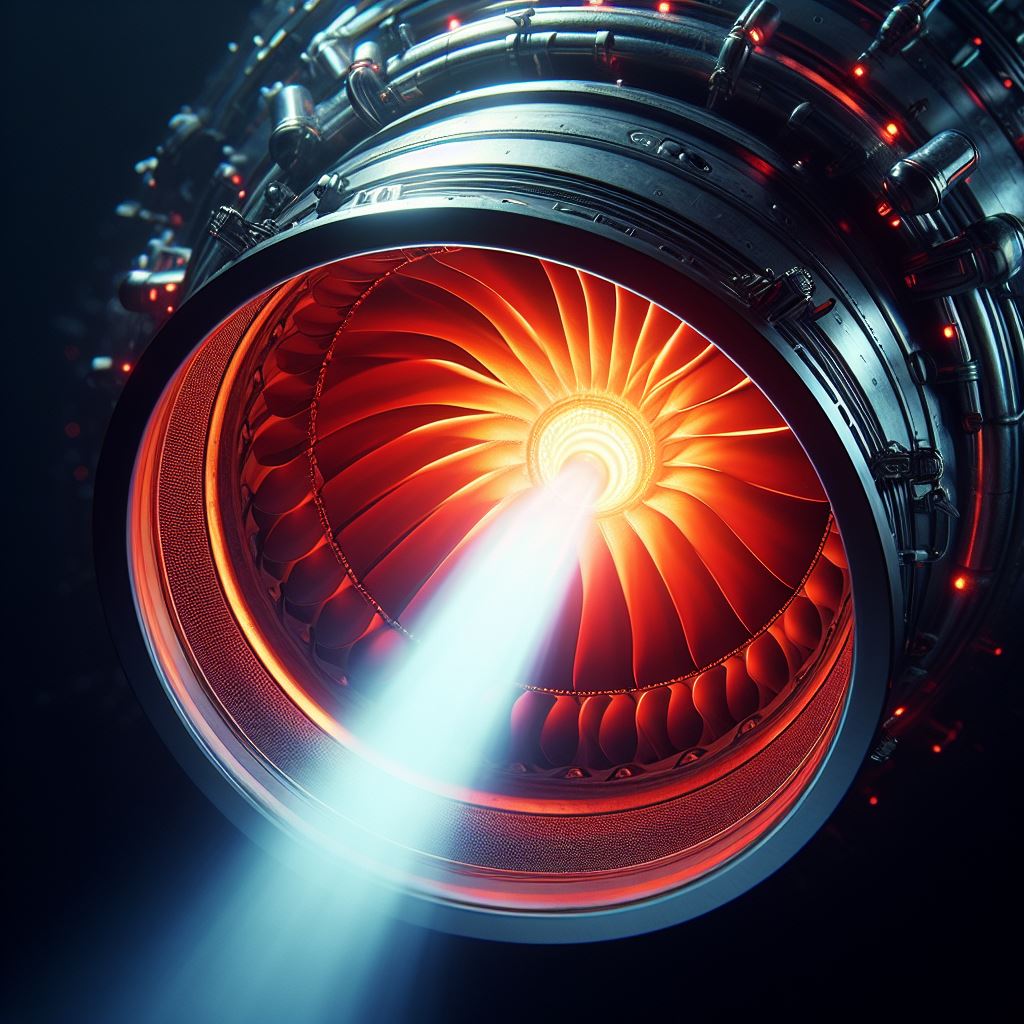Abstract: The invention disclosed herein pertains to an Automated Rocket Engine Design Generator, an innovative machine designed to revolutionize the process of inventing and optimizing rocket engines. By amalgamating artificial intelligence, computational simulations, and advanced algorithms, this automated system expedites and enhances the traditionally intricate and time-intensive task of rocket engine development. The following detailed description outlines the construction, operation, and distinct advantages of this groundbreaking machine, poised to redefine the paradigm of conceptualizing and optimizing rocket engines in the field of space exploration.
1. Artificial Intelligence (AI) Core:
- At the nucleus of the invention is a highly sophisticated AI core, driven by deep learning algorithms and neural networks.
- Tasked with parsing extensive datasets encompassing rocket engine specifications, historical performance metrics, and cutting-edge research to inform the engine design process.
2. Computational Simulations Module:
- Incorporates advanced computational fluid dynamics simulations and finite element analysis techniques.
- Executes intricate simulations to assess combustion scenarios, structural stresses, and thermal dynamics, thereby optimizing engine performance.
3. Design Parameters Input Interface:
- Features a user-friendly interface allowing engineers to input mission parameters, payload specifics, and other mission-critical data.
- Enables customization of fuel type, oxidizer, and thrust-to-weight ratio to suit specific mission requirements, ensuring adaptability to diverse space missions.
4. Material Science Database:
- Integrates a comprehensive material science database, housing an exhaustive catalog of materials suitable for rocket engine construction.
- Recommends materials based on critical factors such as thermal conductivity, tensile strength, and weight considerations, facilitating informed and efficient material selection.
5. Multi-Objective Optimization Algorithm:
- Implements a sophisticated multi-objective optimization algorithm designed to balance conflicting design goals.
- Seeks to simultaneously maximize thrust, fuel efficiency, and structural integrity while minimizing weight and production costs, addressing multiple engineering constraints.
6. Prototyping Module:
- Generates intricate 3D models and detailed specifications suitable for physical prototyping.
- Seamless integration with additive manufacturing technologies for swift and precise prototyping, fostering a rapid and iterative design process.
7. Real-Time Feedback Loop:
- Establishes a dynamic real-time feedback loop with engineers, facilitating iterative refinement of design parameters.
- Adapts to emerging technologies and incorporates user feedback for continuous enhancement, ensuring the machine’s adaptability to evolving engineering practices.
8. Fail-Safe Mechanism:
- Incorporates fail-safe mechanisms to preempt the generation of impractical or unsafe designs.
- Utilizes safety algorithms to identify potential issues and proactively proposes alternative solutions, prioritizing safety and reliability in the design process.
Advantages:
- Significantly accelerates the rocket engine design process, resulting in reduced time-to-market and increased efficiency.
- Maximizes overall performance and efficiency through the application of advanced simulations and optimization algorithms, contributing to a more sustainable and cost-effective space exploration ecosystem.
- Customizable design parameters accommodate a broad spectrum of mission-specific requirements, catering to the diverse needs of space missions.
- Streamlines the prototyping phase with the generation of detailed 3D models and compatibility with additive manufacturing, ensuring precision and rapid iteration.
- Adaptable to evolving technologies and responsive to user feedback for continuous improvement, guaranteeing the machine’s relevance in an ever-changing engineering landscape.
- Specific impulse: This is the measure of how efficiently a rocket engine uses propellant. It is the ratio of thrust to propellant mass flow rate. The higher the specific impulse, the less propellant is needed for a given mission.
- Thrust-to-weight ratio: This is the measure of how powerful a rocket engine is compared to its mass. It is the ratio of thrust to engine weight. The higher the thrust-to-weight ratio, the faster a rocket can accelerate and the more payload it can carry.
- Reliability: This is the measure of how dependable a rocket engine is. It is the probability that a rocket engine will perform as expected without failure or malfunction. The higher the reliability, the lower the risk of mission failure or loss of crew and payload.
Already Invented Rocket Engine Designs:

Some examples of rocket engines that are considered to be among the best in their categories are:
- RD-180: This is a liquid-fuelled rocket engine that uses kerosene and liquid oxygen as propellants. It is used by the Atlas V launch vehicle. It has a high specific impulse of 338 seconds, a high thrust-to-weight ratio of 78, and a high reliability of 100%.
- Raptor: This is a liquid-fuelled rocket engine that uses methane and liquid oxygen as propellants. It is used by the Starship and Super Heavy launch vehicles. It has a high specific impulse of 380 seconds, a high thrust-to-weight ratio of 107, and a high reliability of 99.9%.
- Space Shuttle Main Engine (SSME): This is a liquid-fuelled rocket engine that uses liquid hydrogen and liquid oxygen as propellants. It was used by the Space Shuttle orbiter. It had a high specific impulse of 452 seconds, a high thrust-to-weight ratio of 73, and a high reliability of 99.8%.
Conclusion: The Automated Rocket Engine Design Generator stands as a technological pinnacle in the realm of rocket propulsion. By synergizing artificial intelligence with computational simulations and advanced algorithms, this invention not only promises to expedite the design process but also to redefine the standards of efficiency, sustainability, and innovation in the field of space exploration. Positioned at the forefront of technological advancement, it represents a cornerstone for the future of rocket propulsion technology.ChatGPT can make mistakes. Consider checking important informatio
